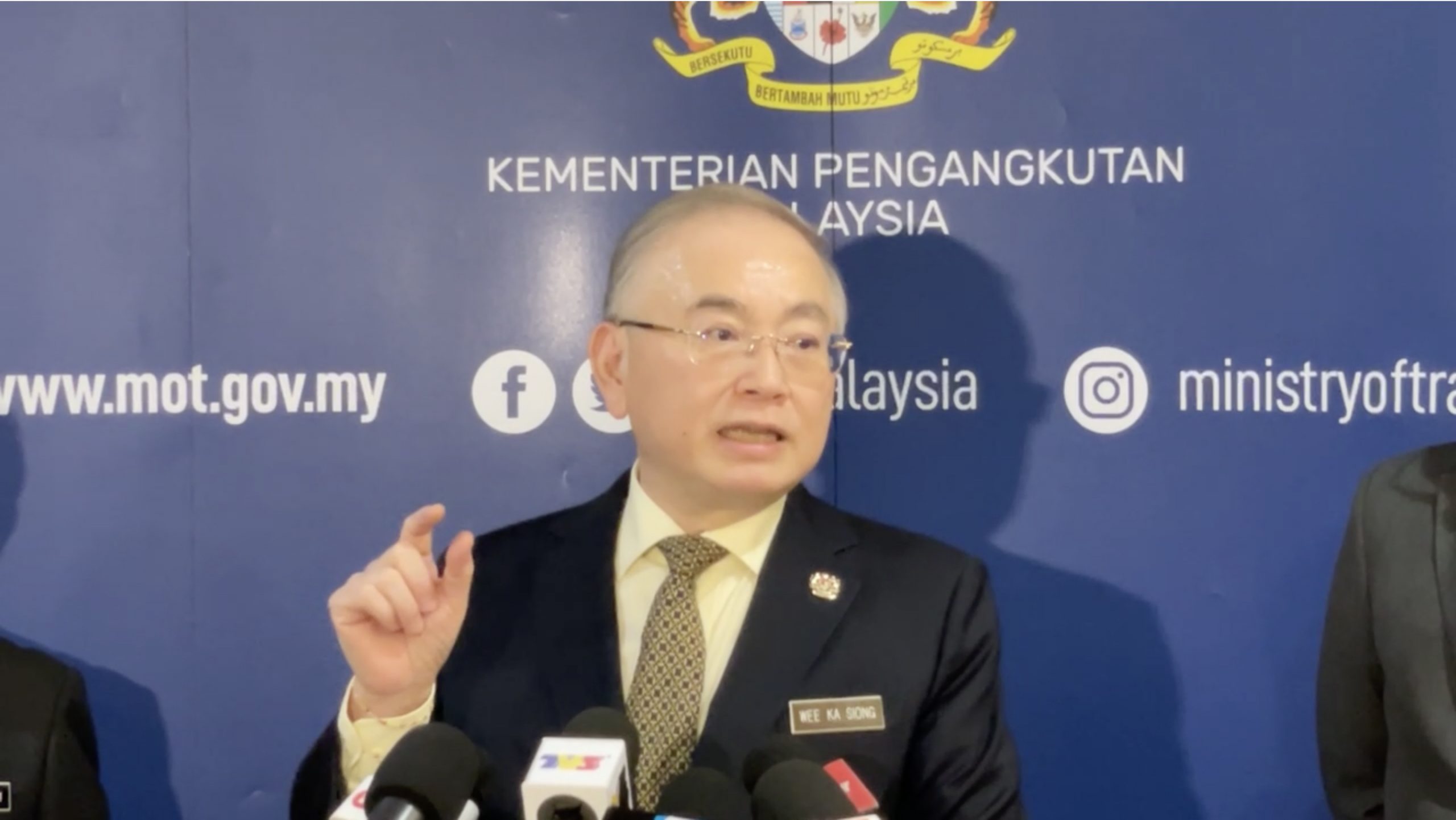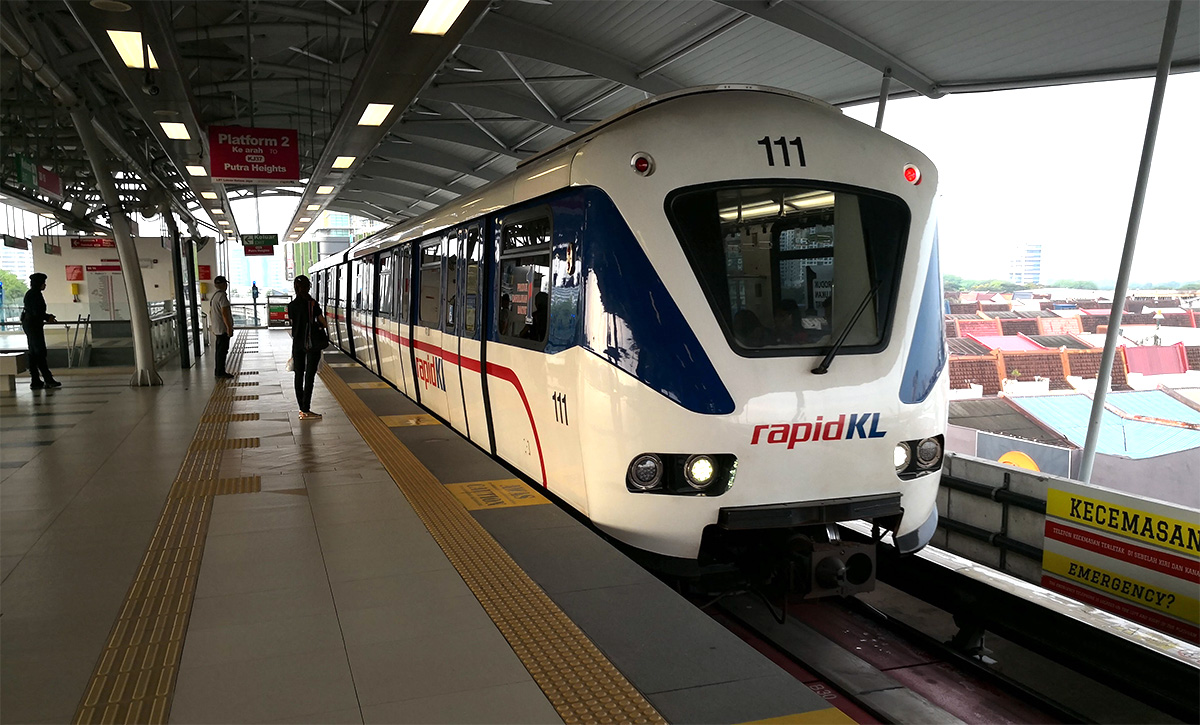This morning, RapidKL announced the closure of 16 stations along the LRT Kelana Jaya Line, stretching from the namesake Kelana Jaya station to Ampang Park. The closure of this many stations is newsworthy enough, but it’s made even more notable by the fact that it will last until 15th of November, meaning that commuters will be left without their primary mode of transport for a week. So how did operator RapidKL get it so wrong, and what’s being done to fix it?
The closure itself
Crowded LRT Kelana jaya pic.twitter.com/SBVfbjtEZl
— Zul_2Talk (@Zul_2Talk) November 9, 2022
The outage will affect 16 stations along the LRT Kelana Jaya Line, which will be closed entirely from 9th to 15th November. These include:
- Kelana Jaya
- Taman Bahagia
- Taman Paramount
- Asia Jaya
- Taman Jaya
- Universiti
- Kerinchi
- Abdullah Hukum
- KL Sentral
- Bangsar
- Pasar Seni
- Masjid Jamek
- Dang Wangi
- Kampung Baru
- KLCC
- Ampang Park
Kemaskini Laluan Kelana Jaya: Berikut adalah stesen-stesen yang akan ditutup bermula 9 – 15 Nov 2022. pic.twitter.com/z7DyzmE6MQ
— Ask Rapid KL (@askrapidkl) November 8, 2022
These stations represent the majority of the original Kelana Jaya line, formerly known as Putra LRT. The eight remaining stations from Damai to the Gombak terminus, as well as the 13 stations on the Subang Jaya extension from Lembah Subang to Putra Heights, will continue operating as usual but will close an hour earlier at 11pm. The Ampang and Sri Petaling line (including at the Masjid Jamek station), as well as the MRT network, are unaffected by the outage.
To get stranded commuters moving, RapidKL is offering free shuttle bus services along five routes, which are:
- LRT1 – LRT Ara Damansara to LRT Pasar Seni (no stops)
- LRT2 – LRT Ara Damansara to LRT Kelana Jaya (no stops)
- LRT3 – LRT Kelana Jaya to LRT Pasar Seni (stops at every station)
- LRT4 – LRT Masjid Jamek to LRT Pasar Seni (no stops)
- LRT5 – LRT Dato Keramat to LRT Masjid Jamek (stops at every station)
2. On Sunday, the roads affected include Jalan Sultan Ismail, Jalan P. Ramlee and Jalan Ampang.
— BFM News (@NewsBFM) November 9, 2022
Police have advised those taking part in the marathon to use public transportation. pic.twitter.com/uElkiuvX3T
Compounding the issue is the fact that the KL Standard Chartered Marathon will be held in the morning of this weekend, 12th and 13th November. To facilitate the event, the police will close roads running right through areas serviced by the Kelana Jaya Line, including:
Saturday, 12th November 2022
- Jalan Raja Laut
- Jalan Sultan Ismail
- Jalan Tunku Abdul Rahman
- Jalan Dang Wangi
Sunday, 13th November 2022
- Jalan Sultan Ismail
- Jalan P Ramlee
- Jalan Ampang
The police have advised citizens to take public transport during these dates, putting further strain on RapidKL’s already hard-hit network.
The cause of the closure
The closure stems from the line’s problematic Automatic Train Control (ATC), which has caused major issues since Saturday. The company first disclosed the problem in a press release yesterday, detailing the disruptions plaguing the Kelana Jaya Line up until that point.
Isu tersebut yang mula dikesan pada tengahari Sabtu telah dapat diselesaikan pada awal pagi Ahad 6 November. Namun demikian, masalah yang sama telah berulang pada hari Isnin 7 November.
— Ask Rapid KL (@AskRapidKL) November 8, 2022
Berikut adalah kronologi kejadian serta tindakan mitigasi yang telah diambil pic.twitter.com/HudKj2UnEJ
Saturday, 5th November: At 10:34am, a malfunction hit one of the ATC’s electronic devices, requiring trains to be driven manually from the KLCC to Ampang Park stations. The problem also caused trains to stop at stations for longer, disrupting the entire line’s schedule. As a stopgap measure, the Operations Control Centre (OCC) reset the offending part, restoring the ATC while the OCC and technical teams monitored operations.
Sunday, 6th November: Once train operations closed at midnight, RapidKL mobilised the technical team to repair the ATC by updating its software. It tested the service seven times and, having been convinced that the system had stabilised, commenced operations as normal at 6am.
Monday, 7th November: An ATC component failed again at 10:38am, causing the same issue. RapidKL halted services temporarily from Kelana Jaya to KLCC at 1:10pm, allowing the technical team to carry out maintenance work on the ATC. The issue resurfaced at 8:39pm, resulting in a disruption at the same stretch. As a safety measure, services between Kelana Jaya and Ampang Park were suspended entirely at 10:15pm, followed by the rest of the line at 11:15pm.
RapidKL immediately ran shuttle buses until 1am to transport affected commuters. It also extended operations at the Pasar Seni LRT and MRT stations for the same reason.
Kemaskini LRT Laluan Kelana Jaya: Gangguan teknikal di antara Stesen KLCC dan Kelana Jaya. Tren akan berhenti di stesen lebih lama. Ikuti media sosial kami untuk perkembangan selanjutnya.
— Ask Rapid KL (@askrapidkl) November 8, 2022
Tuesday, 8th November: After closing, the engineering and technical teams, assisted by original equipment manufacturer (OEM) Thales Group, conducted an investigation to identify the true cause of the disruption. By 5:30am, the teams were able to stabilise the ATC, and operations commenced as normal.
At 3:32pm RapidKL tweeted another disruption between Kelana Jaya and KLCC, followed by a complete closure at 3:53pm. Shuttle buses were again mobilised.
What is RapidKL doing to resolve the issue?
"Kami masih lagi menyiasat punca"
— Hadi Azmi (@amerhadiazmi) November 9, 2022
So belum mula repair, tengah figure out benda apa yang nak kena repair. pic.twitter.com/cHcOgMYI0x
It appears that at this time, RapidKL’s guess regarding the root cause is as good as ours. The company held a press conference today in the aftermath of the closure, saying that it still has not identified the problem with the ATC, which has caused a loss of signal between the operation centres and the trains. This is preventing the trains from moving autonomously between the Kelana Jaya and Ampang Park stations, according to the New Straits Times.
“This is a serious problem which has never happened before,” said Prasarana CEO Mohd Azharuddin Mat Sah. “Rapid Rail is being assisted by a special team from the Thales Group from Toronto, Canada that is expected to arrive tomorrow to look for a short- and long-term solution to this. This encompasses tests of the existing equipment and software. Hence, we are looking at every angle and we need these experts to identify the issue to keep our passengers safe.”
Azharuddin added that the company is planning to compensate some 200,000 commuters affected by the outage. It has also mobilised 73 buses to service the five aforementioned free feeder routes. The company is clearly at a loss, having battled the issue for the better part of a week.

Caretaker Minister of Transport Wee Ka Siong has not responded to this issue. His Facebook page had been dark since 7:27pm yesterday, when he urged citizens in Raub to vote for Barisan Nasional candidate Datuk Chong Sin Woon in GE15. New activity finally surfaced at 2:15pm today—for a livestream of a BN event.
This is not the first outage encountered on the ageing Kelana Jaya Line, built in time for the 16th Commonwealth Games back in 1998, although it’s certainly the most major. The service has encountered several disruptions and incidents in recent years, including three in September and four in May this year alone.
But perhaps the most serious incident happened on 24th May last year. The Kelana Jaya Line was involved in a major accident when two LRT trains collided head-on, injuring 213 commuters, 47 of them seriously. RapidKL was able to commence operations on a single line the following morning as it worked to clear the carriages, with full services resuming on 28th May. In response, a nine-member investigation committee recommended 23 initiatives to improve the safety of the line, carried out over the course of the past year.

Wee Ka Siong also unveiled an RM800 million refurbishment in May 2022 that would involve level four maintenance, repair and overhaul (MRO) of 28 trains, reducing the frequency of service to from two and a half minutes to four. The minister promised an improvement to the frequency by August and said the works would be completed within six months (i.e. this month), after which the frequency was expected to improve to three minutes.
However, the company then issued a statement last month saying that it was still awaiting tachometers from Europe, which were expected to be delivered by December. These components had been delayed and were now expected to be delivered in stages until May 2023; RapidKL predicted it would only achieve the targeted three-minute frequency by September next year. The frequency currently stands at five minutes during peak hours and seven minutes on off-peak hours.
Separately, the company said it was in the process to receive 19 new train car sets as part of the Kuala Lumpur Additional Vehicles 27 (KLAV27) project, which will arrive in phases from July 2023 to December 2024. These will replace some of the two-car trains that have been in continuous operation since 1998.








